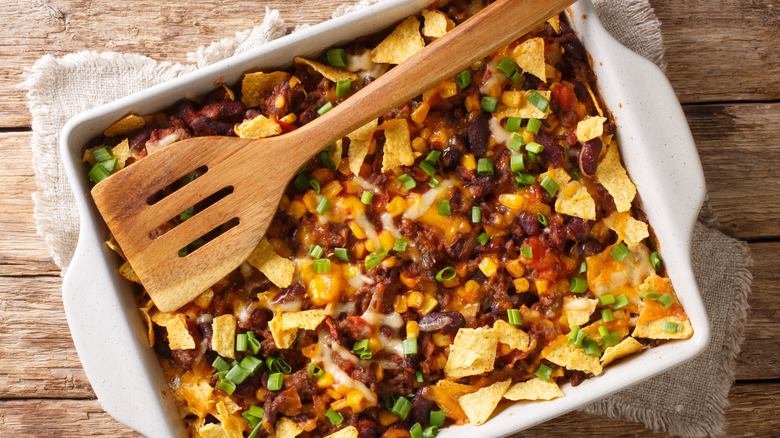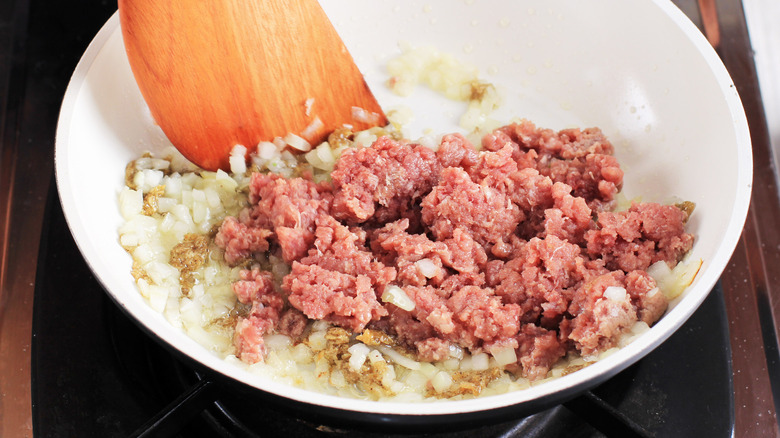Don't Forget To Brown The Meat For Your Casserole
Casseroles are the ultimate low-effort meal. As all the components of a balanced meal get baked together in one pan, this easy entrée can be thrown together within minutes. Yet, while everyone might have their own way of assembling a casserole, there is one non-negotiable step we feel strongly about. Always brown the meat beforehand. Trust us: It's worth it.
Not to state the obvious, but sautéing ground beef, raw chicken, or fatty pork lardons simply makes for better aesthetics. Where meat cooked directly inside a casserole tends to have a muted hue, lightly browned meat is significantly more appealing to see layered inside the finished dish. Plus, let's not forget that while cooking from raw might save you time during prep work, skipping the browning process will only result in tacking on additional cooking time.
However, more than anything else, browning means more flavor. As pieces of meat cook and undergo the Maillard reaction, the chemical compounds responsible for flavor and aroma are released, which leads to a more mouthwatering end product. In essence, deciding not to brown meat would be like deciding the casserole shouldn't reach its full flavor potential — tragic, we know.
A few extra steps will result in a higher quality casserole
In addition to adding another dimension of depth, browning meat makes sense from a textural perspective. For example, browning meat allows the protein to get rid of excess moisture and fat. This means casseroles will be less soggy and greasy when meat is partially cooked, particularly if you drain the juices before adding them to the other ingredients.
Following in the footsteps of browning meat, it should be no surprise that all ingredients fare better when par-cooked. From carrots to pasta, any super sturdy shouldn't be added to a casserole completely raw. Along with compromising taste and appearance, adding raw ingredients to a casserole can even increase the risk of it being bone dry or, worse yet, extremely wet. It can also lead to uneven cooking. That said, make sure not to overcook any ingredients.
The bottom line is this: Allocating enough time to prepare the ingredients properly is key when crafting a casserole. Although it might change the notion of a "one-dish meal" that you may have envisioned, these additional steps, like browning meat and par-boiling vegetables and starches, can transform an ordinary casserole into something truly outstanding.

